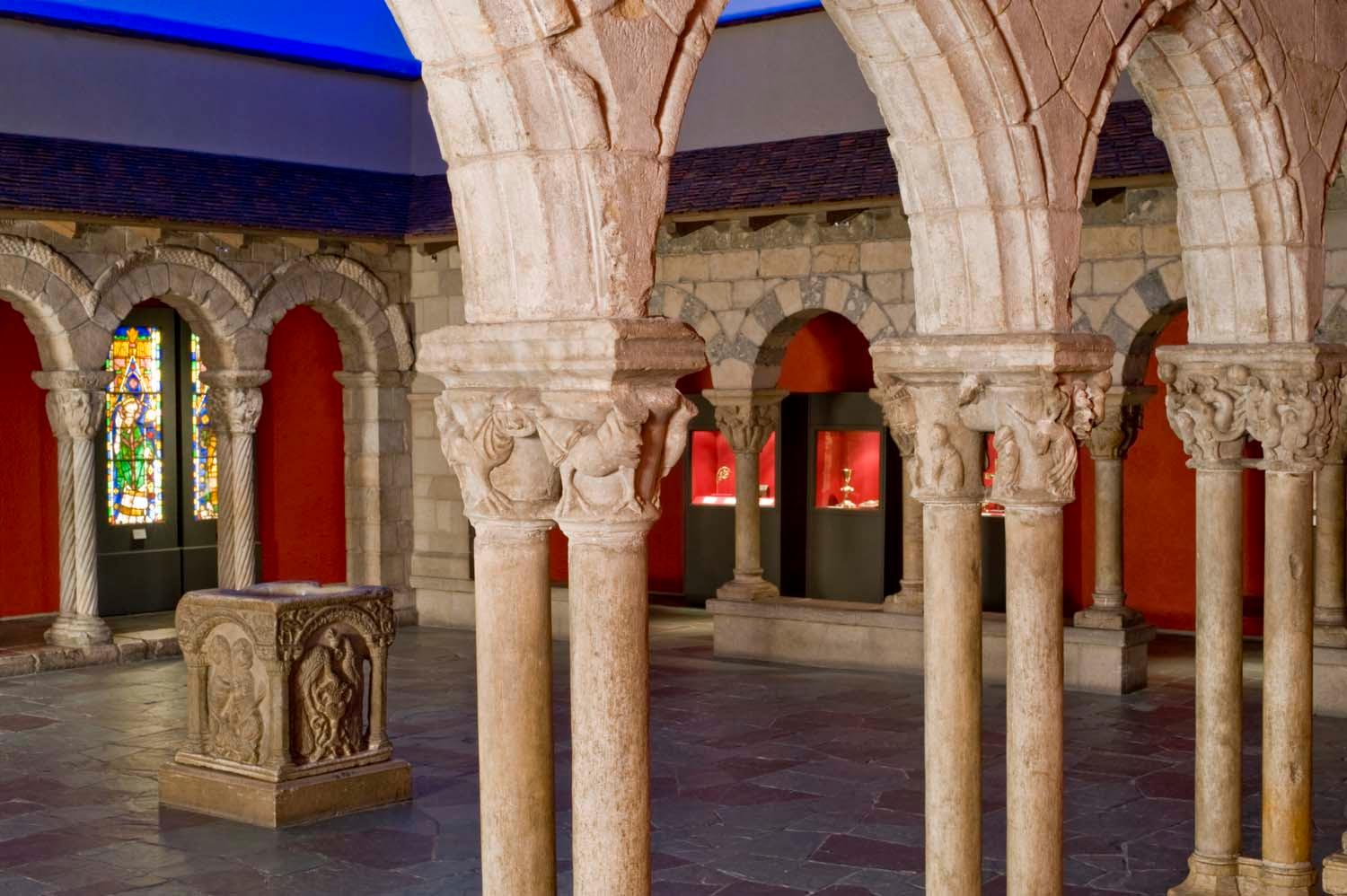Cloister Arcade, probably from Espira-de-l’Agly
Artist: In the style of Cuxa Workshop (French)
Date: about 1150
Dimensions:
Plinth to keystone: 91 1/2 in. (232.4 cm)
Plinth to spring of arch: 67 1/2 in. (171.5 cm)
Between columns (on center): 64 1/8 in. (162.9 cm)
Medium: marble
Place of Origin: Languedoc-Roussillon, France
Classification: Architectural Elements
Credit Line: Purchased with funds from the Libbey Endowment, Gift of Edward Drummond Libbey
Object number: 1934.93A-E
Label Text:The production of sculptural decoration in monasteries blossomed in the 12th century, the period when stonemasons carved this arcade for the monastic church at Espira-de-l’Agly (ESS-peer-ah-duh-lag-LEE) in the northeastern Pyrenees mountains. Fashioned out of various colors of marble, the capitals are carved with stylized vegetation, geometric motifs, and fantastical creatures in bold relief. Several are decorated with wild animals, and the central capital depicts pairs of fearsome, winged lions whose bodies share a single head.
Some monks thought art was inappropriate for cloisters. Bernard of Clairvaux (1090–1153), the leader of a new and powerful group of monks called the Cistercians, condemned “monstrous” depictions of animals on cloister capitals, complaining:
…in the cloisters, before the eyes of the brothers while they read—what is that ridiculous monstrosity doing, an amazing kind of deformed beauty and yet a beautiful deformity? What are the filthy apes doing there? The fierce lions? The monstrous centaurs? The creatures, part man and part beast? The striped tigers? The fighting soldiers? The hunters blowing horns? You may see many bodies under one head, and conversely many heads on one body. … Everywhere so plentiful and astonishing a variety of contradictory forms is seen that one would rather read in the marble than in books, and spend the whole day wondering at every single one of them than in meditating on the law of God.
Despite Bernard’s passionate objections, most monasteries continued to feature sculptural decoration in cloisters and other monastic spaces.
Some monks thought art was inappropriate for cloisters. Bernard of Clairvaux (1090–1153), the leader of a new and powerful group of monks called the Cistercians, condemned “monstrous” depictions of animals on cloister capitals, complaining:
…in the cloisters, before the eyes of the brothers while they read—what is that ridiculous monstrosity doing, an amazing kind of deformed beauty and yet a beautiful deformity? What are the filthy apes doing there? The fierce lions? The monstrous centaurs? The creatures, part man and part beast? The striped tigers? The fighting soldiers? The hunters blowing horns? You may see many bodies under one head, and conversely many heads on one body. … Everywhere so plentiful and astonishing a variety of contradictory forms is seen that one would rather read in the marble than in books, and spend the whole day wondering at every single one of them than in meditating on the law of God.
Despite Bernard’s passionate objections, most monasteries continued to feature sculptural decoration in cloisters and other monastic spaces.
DescriptionFive columns, bases, and arcade.
On view
In Collection(s)















